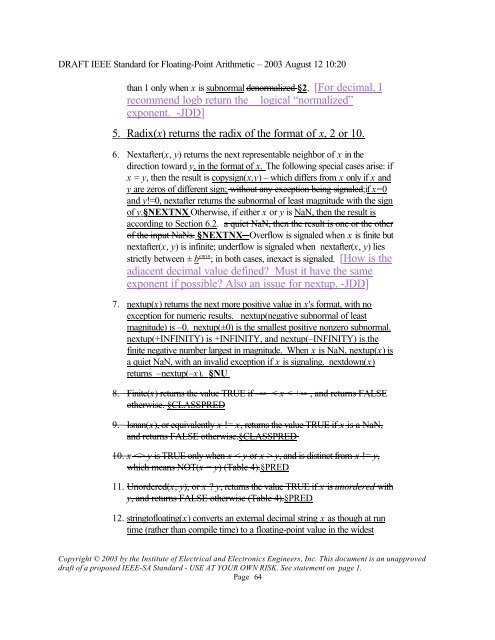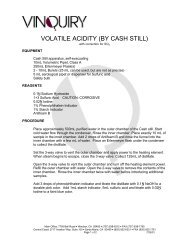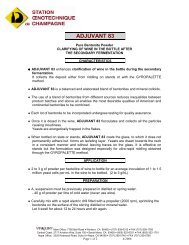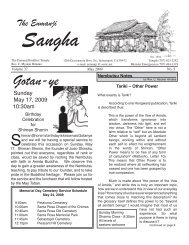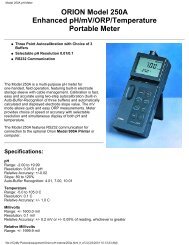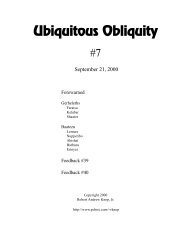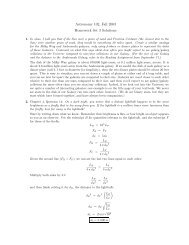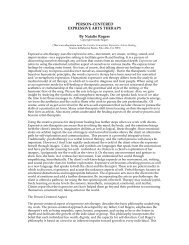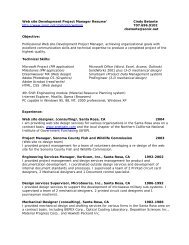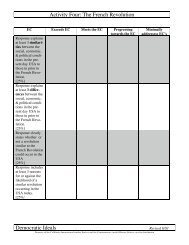DRAFT IEEE Standard for Binary Floating-Point Arithmetic - Sonic.net
DRAFT IEEE Standard for Binary Floating-Point Arithmetic - Sonic.net
DRAFT IEEE Standard for Binary Floating-Point Arithmetic - Sonic.net
You also want an ePaper? Increase the reach of your titles
YUMPU automatically turns print PDFs into web optimized ePapers that Google loves.
<strong>DRAFT</strong> <strong>IEEE</strong> <strong>Standard</strong> <strong>for</strong> <strong>Floating</strong>-<strong>Point</strong> <strong>Arithmetic</strong> – 2003 August 12 10:20<br />
than 1 only when x is subnormal denormalized §2. [For decimal, I<br />
recommend logb return the logical “normalized”<br />
exponent. -JDD]<br />
5. Radix(x) returns the radix of the <strong>for</strong>mat of x, 2 or 10.<br />
6. Nextafter(x, y) returns the next representable neighbor of x in the<br />
direction toward y, in the <strong>for</strong>mat of x. The following special cases arise: if<br />
x = y, then the result is copysign( x,y ) – which differs from x only if x and<br />
y are zeros of different sign; without any exception being signaled;if x =0<br />
and y!=0, nextafter returns the subnormal of least magnitude with the sign<br />
of y. § NEXTNX Otherwise, if either x or y is NaN, then the result is<br />
according to Section 6.2. a quiet NaN, then the result is one or the other<br />
of the input NaNs. § NEXTNX Overflow is signaled when x is finite but<br />
nextafter(x, y) is infinite; underflow is signaled when nextafter(x, y) lies<br />
strictly between ± b emin ; in both cases, inexact is signaled. [How is the<br />
adjacent decimal value defined? Must it have the same<br />
exponent if possible? Also an issue <strong>for</strong> nextup. -JDD]<br />
7. nextup(x ) returns the next more positive value in x 's <strong>for</strong>mat, with no<br />
exception <strong>for</strong> numeric results. nextup(negative subnormal of least<br />
magnitude) is – 0. nextup(±0) is the smallest positive nonzero subnormal.<br />
nextup(+INFINITY) is +INFINITY, and nextup(–INFINITY) is the<br />
finite negative number largest in magnitude. When x is NaN, nextup(x ) is<br />
a quiet NaN, with an invalid exception if x is signaling. nextdown( x )<br />
returns – nextup(– x ). §NU<br />
8. Finite(x) returns the value TRUE if –¥ < x < +¥ , and returns FALSE<br />
otherwise. §CLASSPRED<br />
9. Isnan(x), or equivalently x != x, returns the value TRUE if x is a NaN,<br />
and returns FALSE otherwise.§CLASSPRED<br />
10. x y is TRUE only when x < y or x > y, and is distinct from x != y,<br />
which means NOT(x = y) (Table 4).§PRED<br />
11. Unordered(x, y), or x ? y, returns the value TRUE if x is unordered with<br />
y, and returns FALSE otherwise (Table 4).§PRED<br />
12. stringtofloating( x ) converts an external decimal string x as though at run<br />
time (rather than compile time) to a floating-point value in the widest<br />
Copyright © 2003 by the Institute of Electrical and Electronics Engineers, Inc. This document is an unapproved<br />
draft of a proposed <strong>IEEE</strong>-SA <strong>Standard</strong> - USE AT YOUR OWN RISK. See statement on page 1.<br />
Page 64


